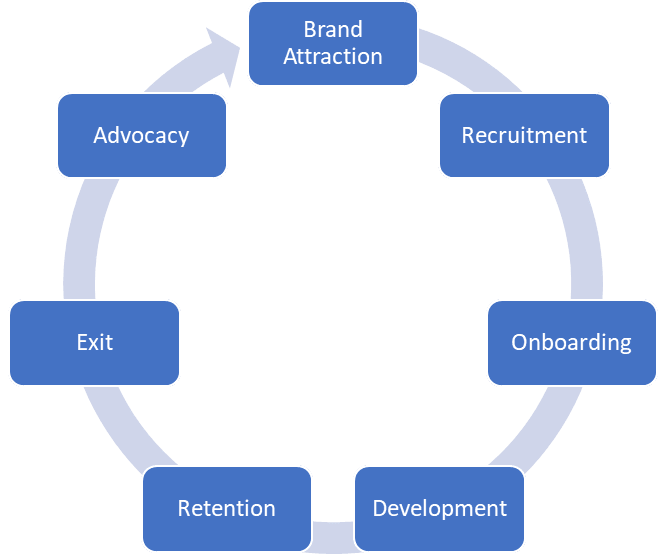The employee life cycle refers to the various stages an employee goes through during their tenure within an organization. It encompasses the entire journey, starting from recruitment and selection to onboarding, development, retention, and eventually offboarding. Each stage plays a crucial role in shaping the employee’s experience and overall organizational success. In this ultimate guide for HR, we will explore each phase of the employee life cycle and provide insights on how to effectively manage and optimize each stage.
- Recruitment and Selection:
- Identify hiring needs and create accurate job descriptions.
- Develop effective sourcing strategies to attract top talent.
- Design a comprehensive selection process, including interviews, assessments, and background checks.
- Ensure a fair and unbiased selection process while adhering to legal and regulatory requirements.
- Onboarding:
- Create an onboarding program that introduces new employees to the organization’s culture, values, policies, and procedures.
- Provide necessary resources, such as orientation materials, technology, and access to systems.
- Assign a mentor or buddy to help new hires navigate their roles and establish relationships within the organization.
- Set clear expectations and goals for the initial period and provide necessary training and support.
- Development and Training:
- Identify employee development needs through performance reviews, assessments, and discussions.
- Offer a variety of training programs, both technical and soft skills, to enhance employee competencies.
- Encourage continuous learning and provide opportunities for professional growth, such as workshops, conferences, and certifications.
- Implement career development plans and succession planning to nurture talent from within the organization.
- Performance Management:
- Establish clear performance expectations and goals for each employee.
- Conduct regular performance reviews and provide constructive feedback.
- Recognize and reward achievements to motivate and retain high-performing employees.
- Address performance issues promptly through coaching, counseling, or performance improvement plans.
- Employee Engagement and Retention:
- Foster a positive work environment that values diversity, inclusion, and employee well-being.
- Encourage open communication and provide channels for feedback and suggestions.
- Promote work-life balance and offer employee benefits and perks that align with their needs.
- Develop recognition and rewards programs to acknowledge employee contributions.
- Career Progression and Succession Planning:
- Identify high-potential employees and create development plans for their career growth.
- Implement succession planning to ensure a smooth transition of key roles.
- Provide opportunities for internal promotions and transfers to retain top talent.
- Encourage employees to explore different career paths within the organization.
- Offboarding:
- Conduct exit interviews to gather feedback and insights from departing employees.
- Ensure a smooth transition for the exiting employee by completing necessary paperwork and providing support.
- Protect sensitive company information and assets by revoking access rights.
- Leverage offboarding data to identify areas for improvement and enhance the overall employee experience.
Remember, the employee life cycle is not a linear process, and it may vary depending on the organization and industry. HR professionals should continuously evaluate and adapt their strategies to meet the evolving needs of employees and the organization. By effectively managing each stage of the employee life cycle, HR teams can create a positive work environment, enhance employee engagement and productivity, and contribute to long-term organizational success.
Became a Certified HR Professional. Join Next Innovation Asia, The best HR Training Institute in chennai, we offering Practical HR Courses with Assured Job Support.
Join us to grow your career in HR Domain

